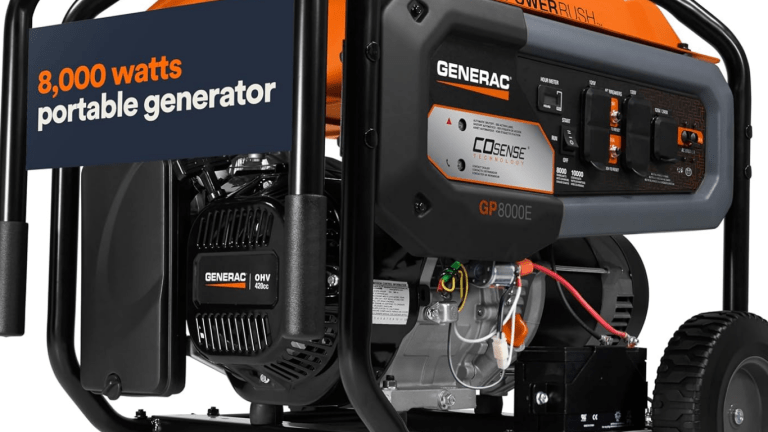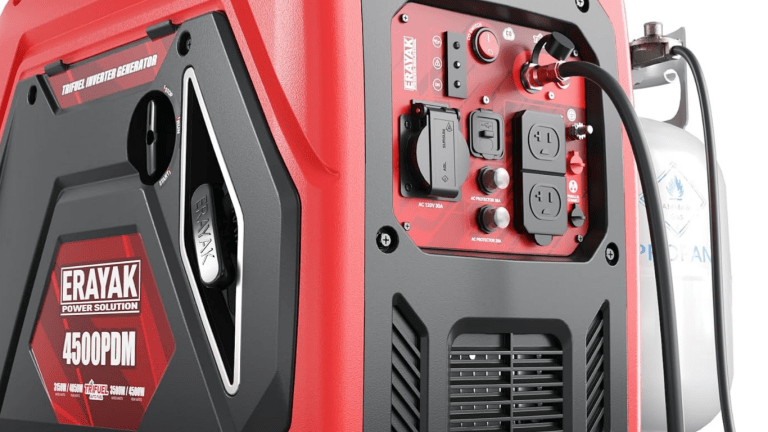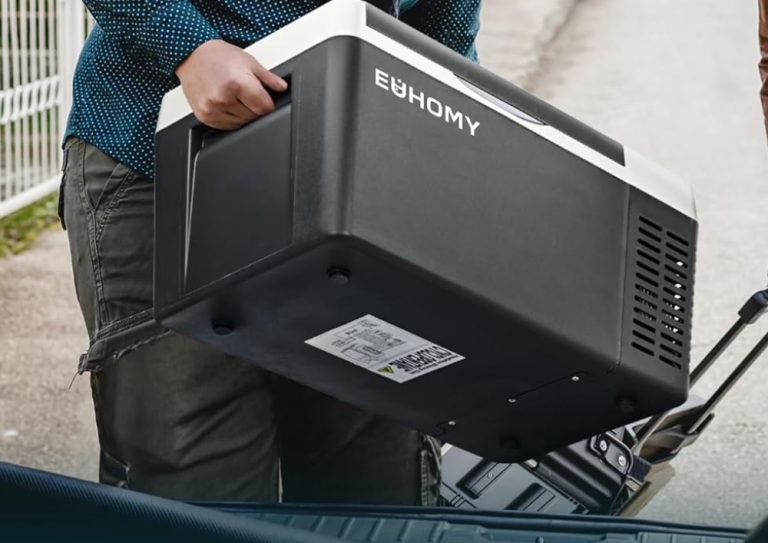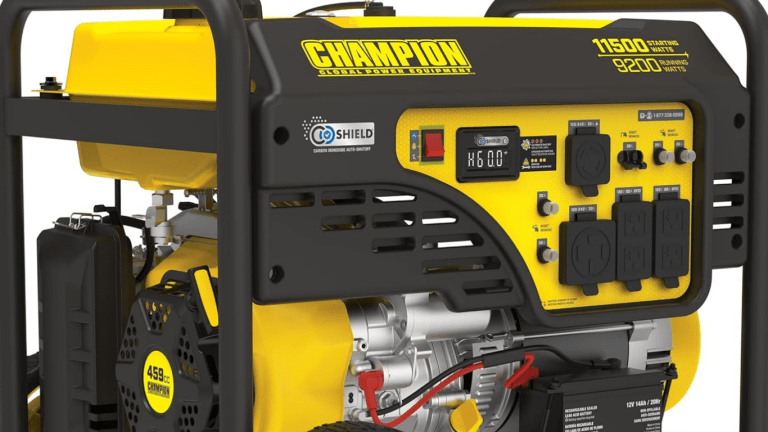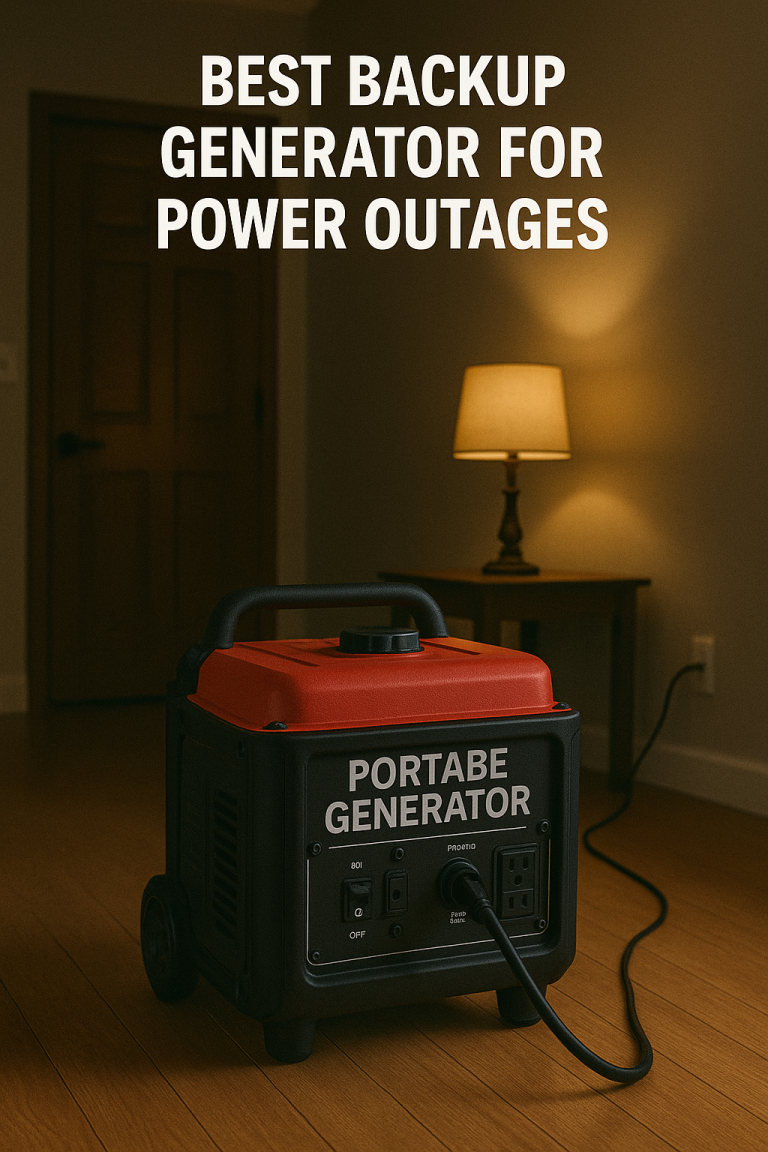Portable Generator for Small Apartment – Compact Power When You Need It Most
Living in a small apartment doesn’t mean you’re safe from power outages. Whether it’s a city-wide blackout, winter storm, rolling blackout, or a sudden grid failure, losing electricity in a compact space is just as disruptive — if not more. That’s why having a portable generator for a small apartment can be a smart, life-simplifying solution.Click link below if you chose to buy one now.

But not all generators are apartment-friendly. You need quiet, compact, low-emission, and safe power options that won’t set off alarms or disturb the neighbors. In this guide, we’ll walk you through exactly what kind of portable generator works best for apartment living, what features matter most, and how to stay safe while keeping your lights on. 
Do You Really Need a Generator in an Apartment?
Absolutely — especially if you live in a city where infrastructure is aging or weather extremes are becoming more common. Even a short-term power outage can leave you:
- Without refrigeration for food or medication
- Unable to charge your phone, laptop, or work devices
- In the dark with no lights
- Without fans, heat, or cooling
- Unable to use elevators, intercoms, or security systems
For those who work from home, care for others, or simply want peace of mind, a small, quiet, apartment-safe generator offers real security during unexpected outages.
Challenges of Using a Generator in an Apartment
Before diving into what to buy, it’s important to recognize the challenges that come with using a generator in a multi-unit building or apartment:
- No outdoor space to safely run fuel-powered generators
- Limited ventilation — meaning fuel fumes and carbon monoxide pose real risks
- Close neighbors — so noise is a big concern
- Building rules or HOA regulations that may restrict generator use
- Limited space for storage
This means traditional gas generators — even small portable ones — are often not safe or suitable for apartment use unless you have a balcony or private outdoor area with proper ventilation and distance. The good news? There’s a better option.
The Best Type of Generator for Apartment Use: Portable Power Stations
If you live in a small apartment, your best bet is a battery-powered portable power station — often called a solar generator. These don’t burn fuel. They don’t make noise. They don’t emit fumes. And they’re safe to use indoors. Portable power stations offer the ability to charge and power multiple devices using built-in USB ports, AC outlets, and 12V sockets — all in a quiet, compact form. Some benefits include:
- Zero emissions – safe for use in small indoor spaces
- Silent operation – won’t disturb you or your neighbors
- Rechargeable via wall outlet, car, or solar panel
- Compact and easy to store – fits in closets, under beds, or cabinets
- Low maintenance – no oil changes or fuel handling
For apartment dwellers, this is the ultimate emergency power source. What Can a Portable Generator Power in an Apartment? While you won’t be running central heating or full kitchen appliances on a small power station, you can absolutely keep the essentials going:
- Phones and tablets for communication and news updates
- Laptops for remote work
- LED lights or lamps
- Wi-Fi routers
- Fans or small space heaters (depending on wattage)
- Mini fridges or medication coolers
- CPAP machines or medical devices
Depending on the size of your power station, you may be able to run multiple items at once or alternate usage to stretch the battery. How to Choose the Right Generator for a Small Apartment Here’s what you should look for when shopping for a portable generator that works in small living spaces: Battery Capacity (Watt-Hours) This tells you how long the generator will last. For example, a 500Wh (watt-hour) battery might charge your phone 30 times, run a small fan for several hours, or keep a CPAP machine running through the night. For light emergency use, aim for at least 300 to 1000 watt-hours. Compact Size and Weight Since you’ll likely be storing this unit in a closet or under a bed, choose one that’s lightweight and space-saving. Many quality models are under 15 pounds and still offer enough power for emergency use. Output Options Make sure the generator has the right ports for your devices, including:
- AC outlets for lamps or routers
- USB-A and USB-C ports for charging electronics
- 12V ports for small DC appliances
More output types mean more flexibility during outages. Fast Charging and Pass-Through Capability A good power station should fully recharge in a few hours and allow pass-through charging — meaning you can charge the unit while it powers other devices. That’s useful if you need to recharge quickly before the next blackout or storm hits. Quiet and Safe Operation Look for fanless or whisper-quiet models, especially if you live in a building with thin walls. And check for built-in safety features like overload protection, temperature monitoring, and short-circuit protection. Tips for Using a Portable Generator in an Apartment To get the most out of your apartment-safe power solution, follow these best practices: Pre-Charge Before the Outage If there’s a storm warning or blackout forecast, make sure your unit is fully charged ahead of time. Don’t wait until the power’s already out — charge it during calm days so you’re always ready. Conserve Power Smartly Turn off or unplug devices that aren’t essential during an outage. Use low-watt LED bulbs. If your fridge isn’t running, keep the door closed to retain cold air and reduce the need to power it up. Alternate Device Charging Rotate which items you charge. For example, charge your phone and laptop first, then switch over to a light or fan. This stretches your battery life over longer outages. Consider Solar Recharging If you have a balcony or window with good sunlight, pair your power station with a small foldable solar panel. This lets you recharge slowly during daylight hours, giving you even more power independence. What to Avoid While some gas-powered portable generators are labeled “compact” or “quiet,” they are not suitable for use inside apartments. Avoid any generator that emits fumes, requires gasoline or propane, or needs to be run outdoors — unless you have a secure, ventilated outdoor area and your building allows it. Don’t store fuel indoors. Don’t run generators near windows or shared hallways. And don’t bypass safety features. If you want backup power without risk, stick to battery-based units. Final Thoughts: Apartment-Friendly Backup Power Made Easy You don’t need a garage, backyard, or giant fuel tank to stay prepared for power outages. With the right portable generator for a small apartment, you can maintain basic comfort, stay connected, and protect your essentials — even when the lights go out. Here’s what to remember:
- Choose a battery-powered portable power station for indoor safety
- Look for 300–1000 watt-hour capacity depending on your needs
- Prioritize quiet, compact, and multi-port units
- Be ready with a pre-charged setup and optional solar panel for recharging
When the next outage hits, you’ll be glad you planned ahead — and powered up.
Click the link below to setup a backup just in case.



